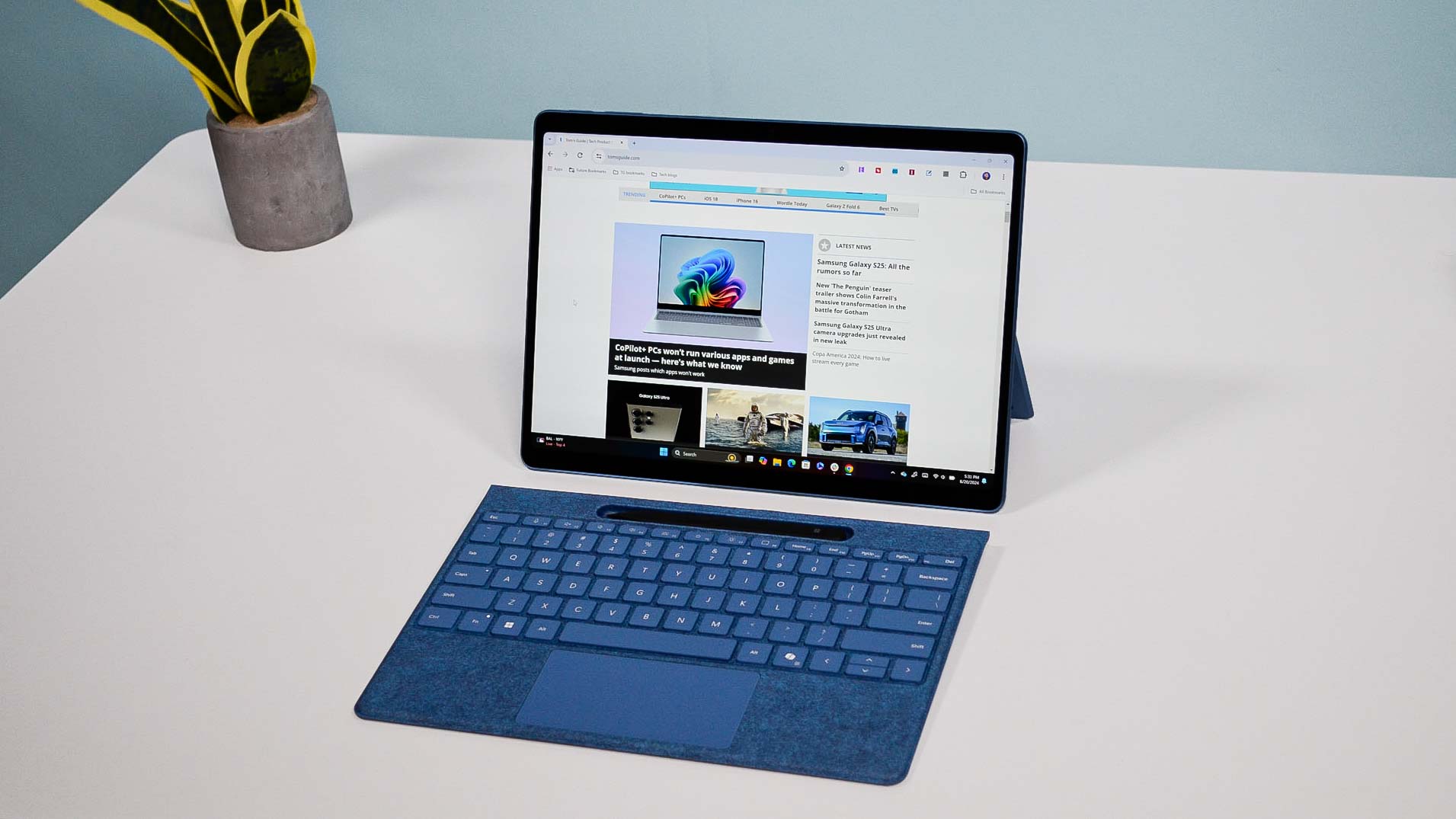
The Microsoft Surface Pro 11 signifies an important change for the company’s popular 2-in-1 laptop. While the device doesn’t appear different from its predecessors, it packs the brand-new Snapdragon X Elite or Snapdragon X Plus chip. Qualcomm’s AI-focused silicon could make the Surface Pro 11 and other Copilot+ PCs on a par with the best MacBooks in terms of performance and battery life. As Microsoft’s flagship computer, the Surface Pro 11 has a lot to live up to.
I’ve been testing the Surface Pro 11 since it launched. My full review will go live soon, but I wanted to share some initial thoughts on Microsoft’s device. I haven’t come to a final verdict yet, but so far, I find the Surface Pro 11 more impressive than the Surface Pro 8 and Surface Pro 9 I previously reviewed. It keeps everything that worked before and jettisons much of what didn't. The Surface Pro 11 also has new features that could be true game-changers for the best Windows laptops and best 2-in-1 laptops. That said, it’s not perfect.
Here are three things I like and two I don’t like about the Microsoft Surface Pro 11.
Microsoft Surface Pro 11: What I like
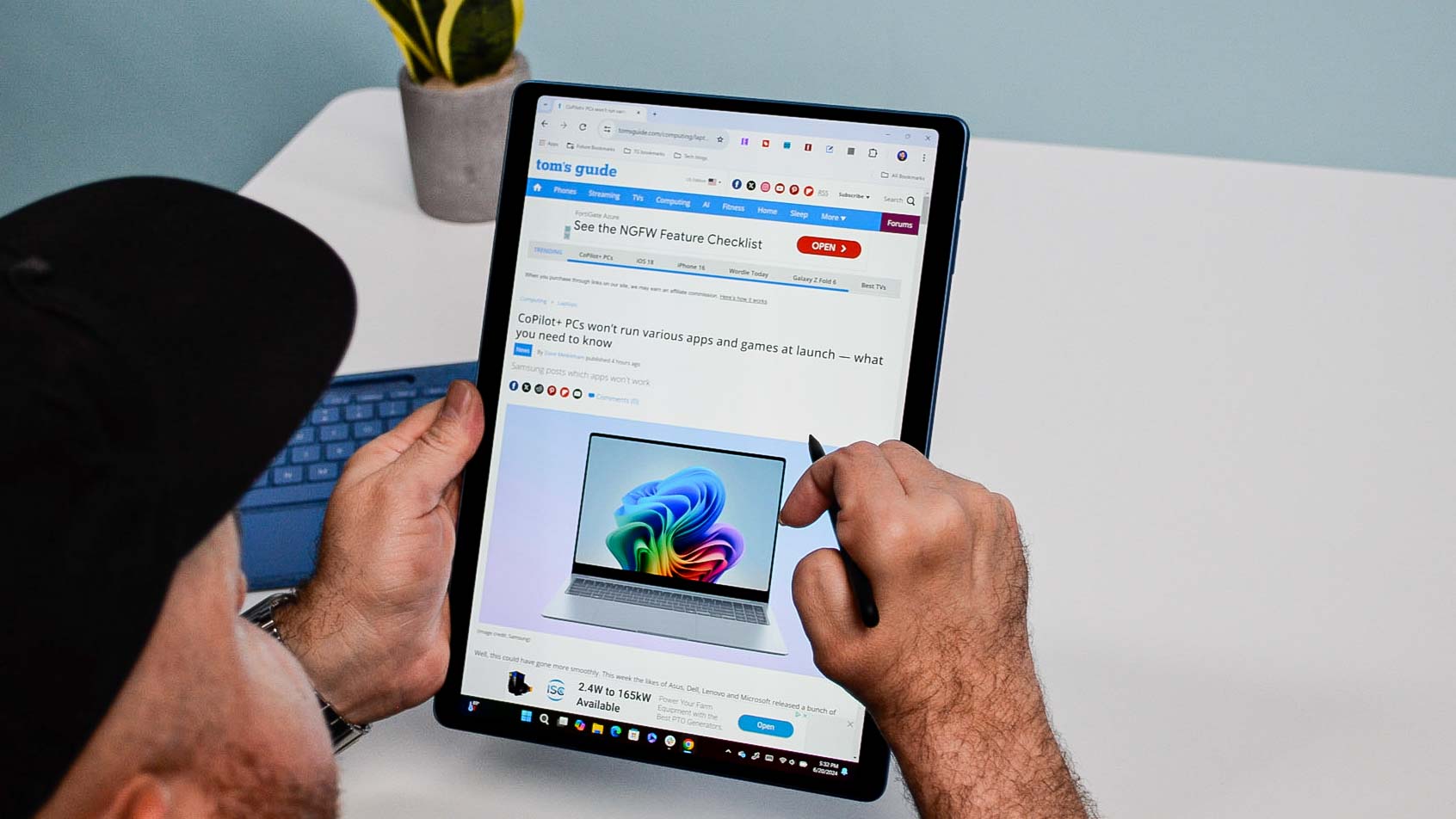
Snapdragon X Elite performance and efficiency
We benchmarked the first Snapdragon X Elite laptops, and it’s clear Qualcomm wasn’t kidding about the power and efficiency of its laptop processor. To be specific, we’ve tested notebooks packing the mid-range Snapdragon X Elite X1E80100 chip, which features 12 cores, a base clock of 3.4GHz and 45 TOPS.
On Geekbench 6, which tests overall CPU performance, the Snapdragon X Elite matched or exceeded the base Apple M3 chip and the mid-range Intel Core Ultra 7 processor. Apple’s silicon has better single-core performance but laptops with X Elite and Core Ultra 7 processors have better multi-core performance.
Snapdragon X Elite laptops also fared well on our Handbrake video editing test, which involves transcoding a 4K video clip to 1080p. The Surface Pro 11 performed the task a minute faster than HP’s notebook. All X Elite laptops finished faster than Apple M3 MacBooks, though Meteor Lake machines were generally faster overall.
While the Surface Pro 11 and other Copilot+ PCs we’ve tested are fantastic for everyday computing, they’re not great for gaming. Some games, such as Fortnite, simply won’t run on these ARM-based devices, while others, like Civilization VI, run poorly since they’re not optimized for ARM. This is disappointing but I don’t consider it a major negative since the current crop of Snapdragon X-powered laptops aren’t meant for dedicated gaming.
Lastly, there’s battery life. We’re still running battery tests on the Surface Pro 11, but the first test we conducted (which involved continuous web-surfing over Wi-Fi with the display set to 150 nits of brightness) saw the laptop last for 12 hours and 10 minutes.
That’s not the incredible 15 hours of the 13-inch MacBook Air M3, but for a Windows laptop, 12 hours is pretty damn good. I hope the other Copilot+ PCs with Snapdragon X Elite fare as well (or even better).
New Surface Pro Flex keyboard cover
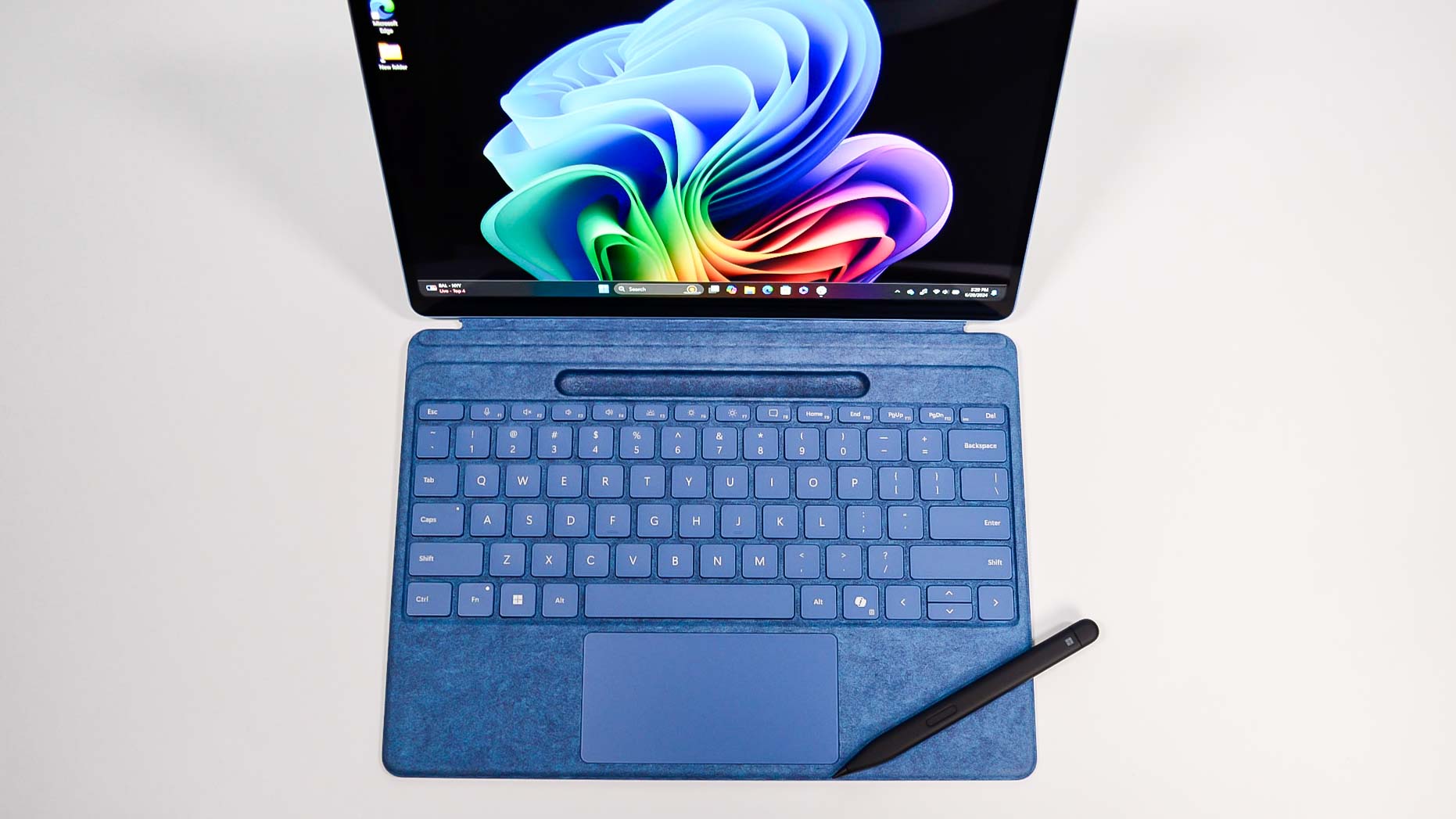
Our Surface Pro 11 review unit came with the new Surface Pro Flex keyboard, which is a redesigned type cover for Microsoft’s 2-in-1. It features a built-in battery that allows you to use the keyboard detached from the laptop. Microsoft says it can last up to 41 hours on a single charge. That’s all well and good, but is the new Pro Flex better than the previous version? Abso-freaking-lutely.
While the old keyboard peripheral worked well enough, I always found it too flimsy. I also didn’t like the keys’ short travel distance. I’m happy to say that the new Pro Flex keyboard is a marked improvement. It’s still not the greatest keyboard peripheral (that honor goes to the Apple Magic Keyboard), but the added weight and better travel distance make it more pleasant to type on. I also love the touchpad’s new haptic feedback, which was sorely missing before.
Same great design
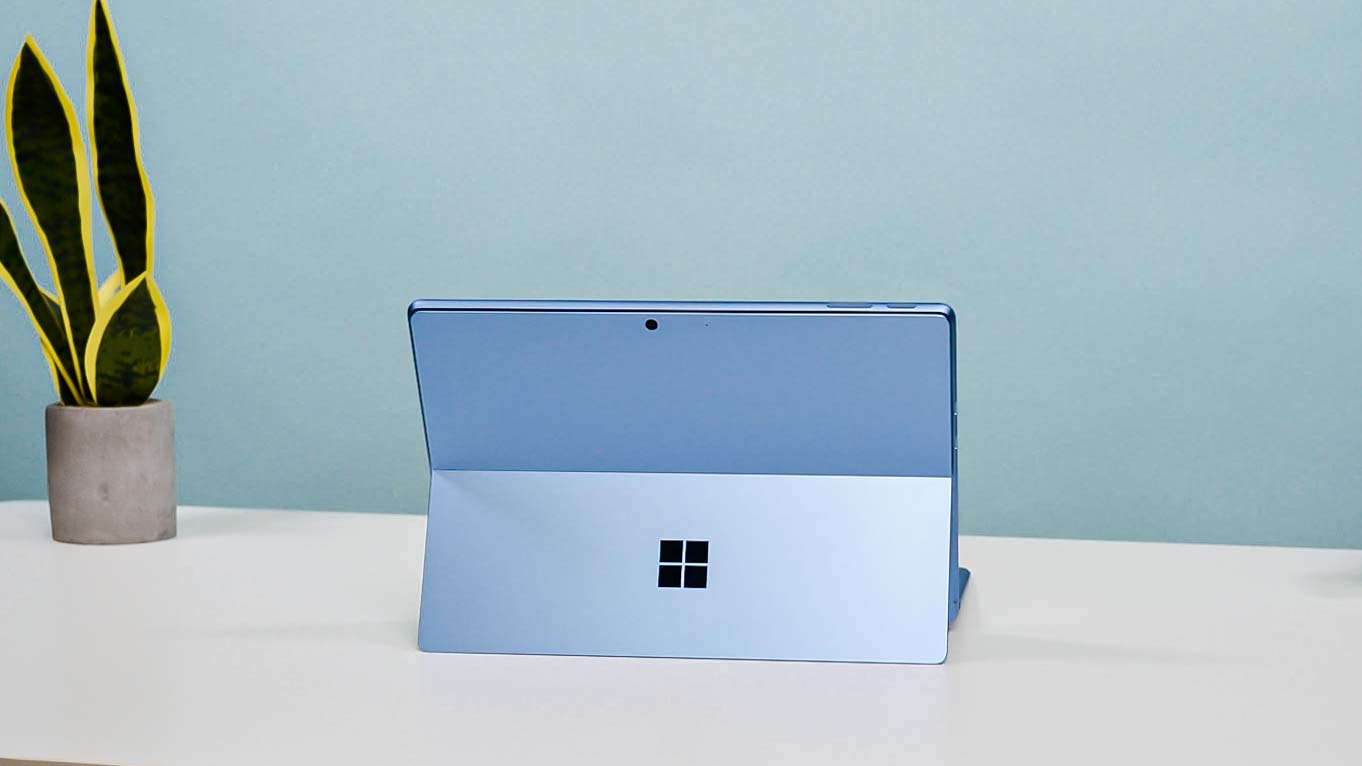
You’d be hard-pressed to tell the difference between the Surface Pro 11 and Surface Pro 9 if they were lined up side by side. While the new laptop’s design isn’t exactly new, that’s not a detriment since it’s still an eye-catching slate — especially in the Bright Sapphire color. At 11.3 x 8.2 x 0.37 inches and 1.97 pounds, it’s also as thin and light as ever.
The kickstand on the back of the 2-in-1 remains one of my favorite features since it means I don’t need to buy a peripheral to prop it up. Thanks to the smart weight distribution, I’m able to set the kickstand to just about any angle without fear the Surface Pro 11 will fall on its screen. The kickstand is also sturdy, which gives me peace of mind when I’m adjusting it.
Microsoft Surface Pro 11: What I don't like
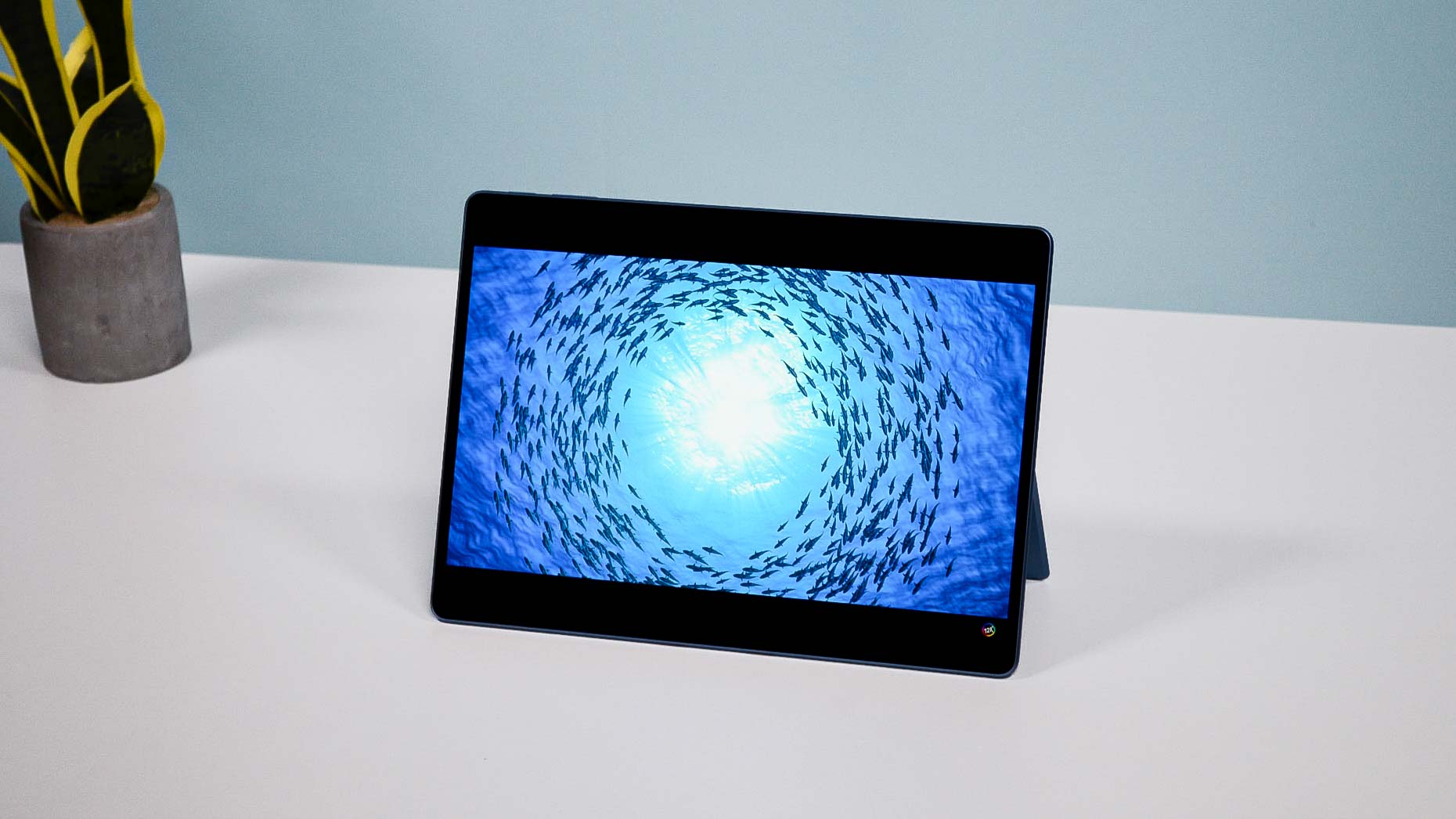
Good but not great display
The Surface Pro 11 I’m testing has an OLED panel — which is a first for the Surface Pro lineup. This is a feature people have been asking for and it’s great that Microsoft now offers an OLED option. The OLED panel on the iPad Pro 2024 does wonders and I expected a similar experience with the Surface Pro. Unfortunately, this hasn’t been the case.
While the OLED screen delivers deeper contrasts between dark and light elements and the HDR is sufficiently bright, I’m not impressed by the overall picture quality. This is mostly due to the oversaturated colors. I like overblown hues on the best gaming laptops, but for a productivity device like this, I prefer more natural colors.
I'm somewhat torn on the display, overall. The OLED isn't the best but it has good contrast. However, the oversaturated colors aren't appealing.
Expensive peripherals
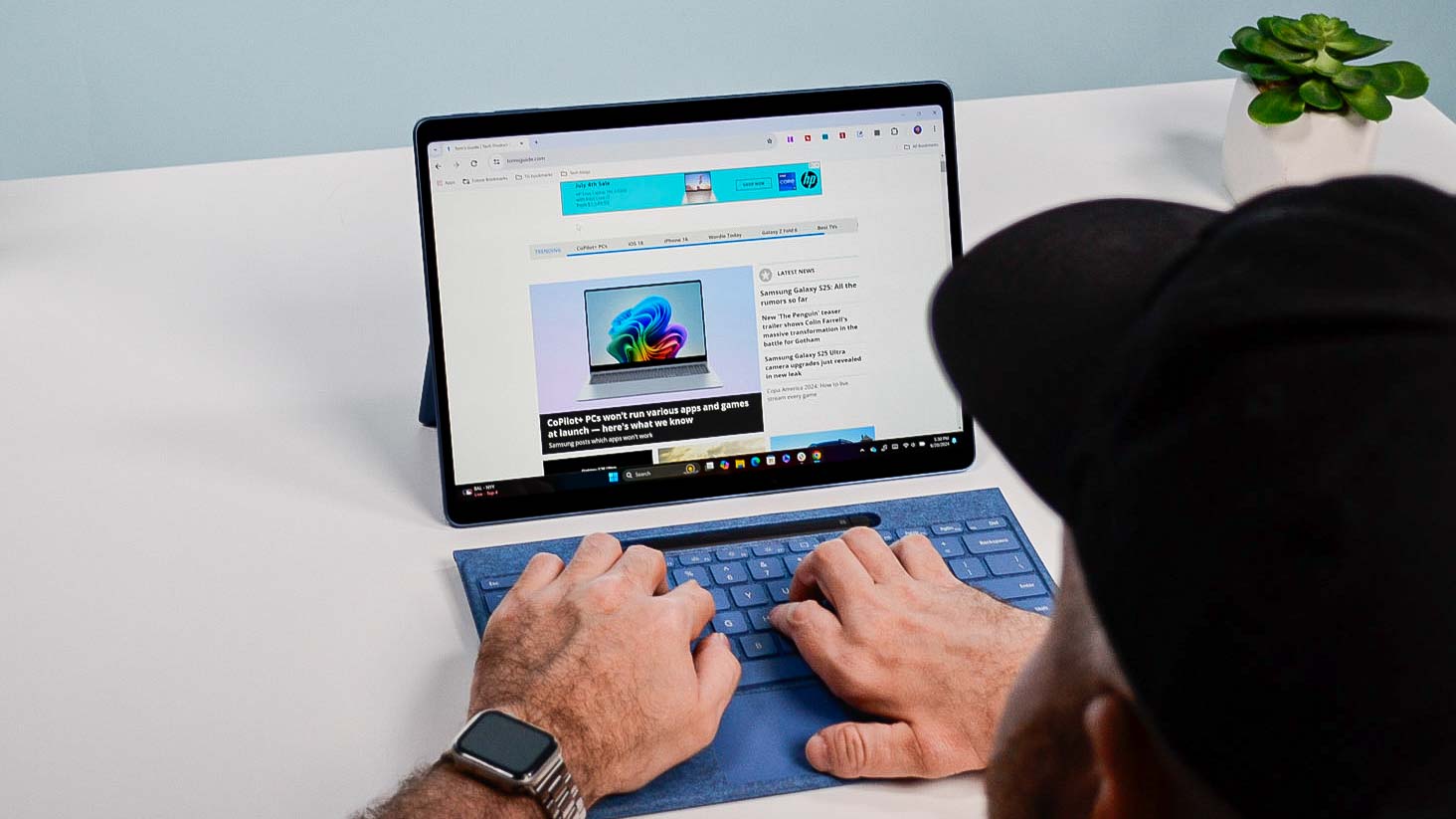
As great as the new Surface Pro Flex keyboard is, there are some drawbacks.
Right now, the keyboard costs a staggering $349. If you want to add the Slim Pen, the price jumps to $449. The new Apple Magic Keyboard also costs $349 while the new Magic Pencil Pro costs $129. In total, Apple’s combined peripherals cost $29 more than Microsoft’s. Even if Microsoft’s peripherals cost (slightly) less than Apple’s, you’re still paying a hefty amount.
Since I’m discussing what I don’t like about the Surface Flex Pro, I want to add that the keyboard only seems to work with the Surface Pro 11 as there is no pairing button to let you use it with other Bluetooth-compatible devices. This is a shame since it would have been nice to have the option to use the keyboard elsewhere.
Microsoft Surface Pro 11: Outlook
The Microsoft Surface Pro 11 seems like it will be the best version of the company’s 2-in-1 thanks to its powerful Qualcomm laptop chip, good (but not great) OLED and redesigned keyboard. It might not offer a huge change from what came before, but that’s not necessarily bad. More power and longer battery life in the same svelte design could be just enough to make this device a winner.
Stay tuned for my full review of the Microsoft Surface Pro 11!







